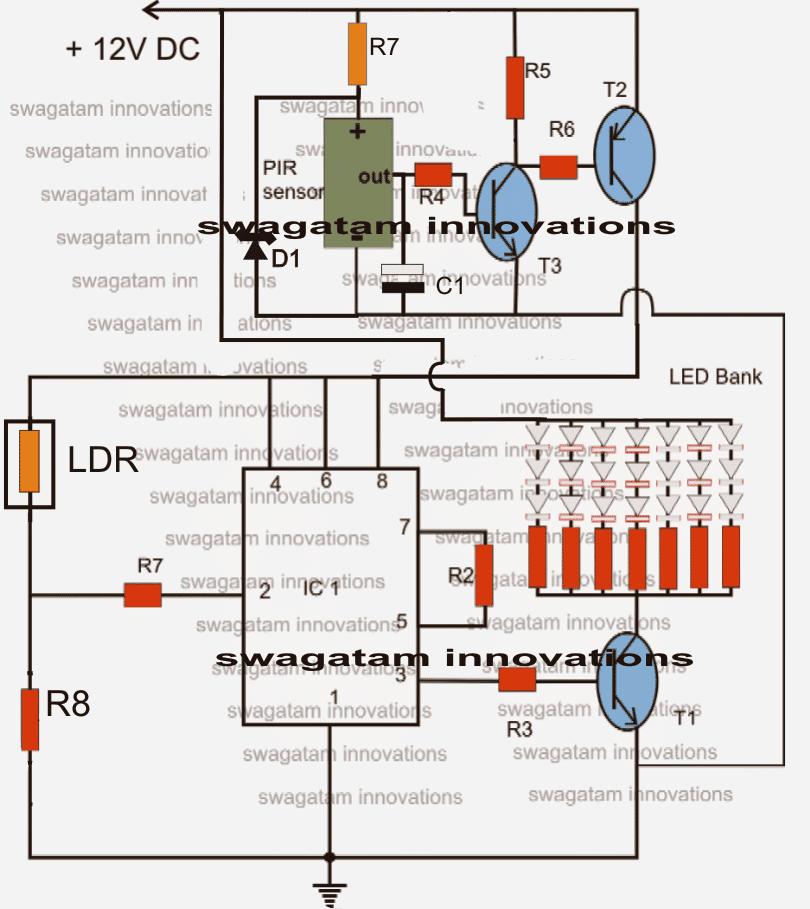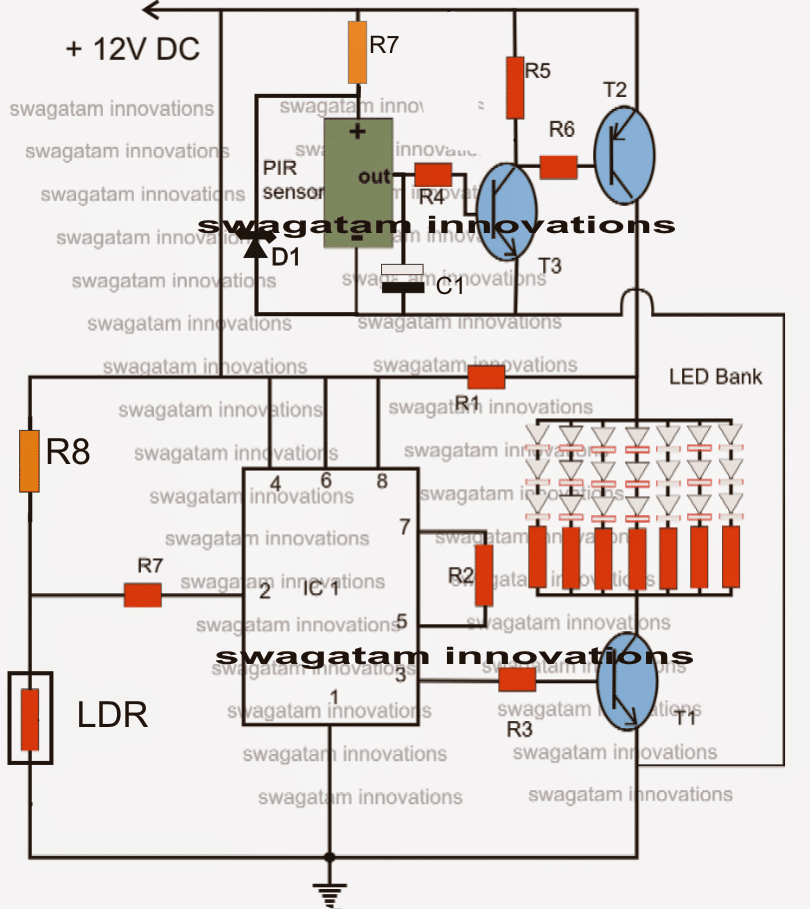The following PIR LED lamp circuit was designed by me for one of the followers of this blog Mr.Deepak upon his request.
The circuit is a LED driver which responds to ambient light as well as to the presence of a human, person or intruder, and varies its illumination accordingly, let's know more.
Technical Specifications
"I was looking to drive 20 LEDs of 0.06 watts.
So total Output voltage is 12-17 volts and total current is 0.08 amps
to drive 4 strings of 5 LEDs each
each led is 3.4 volts and 20 mA.
Can you help with this?
Also I would like to have an ambient sensor to switch on and off and a proximity sensor to switch to full brightness if some one approaches and to switch to half or 30% brightness after 30 seconds.
I need this for commercial use. I need a simple cost effective circuit. I have been following the blog and am sure that you know the subject. Please get back to me."
Simple PIR Controlled LED Lamp Circuit
Before solving the above request, let's first see how we can build the design in its simplest form using a PIR module and some LEDs.
The following circuit shows a simple PIR sensor which activates the connected LEDs in response to the presence of humans within the specified area.
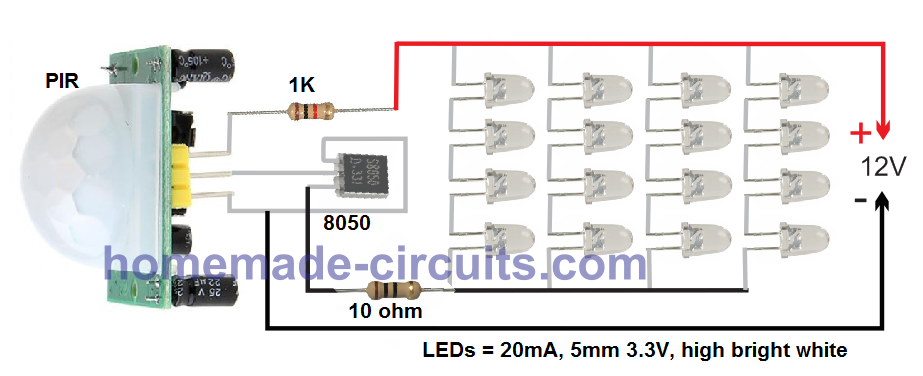
As you can see I have not used any voltage regulator here, since the 1K at the positive works good to limit the current and the voltage to the PIR. This also avoids the base resistor for the transistor.
I have used 16 LEDs, however upto 64 EDs can be used.
For the power supply you can use any cheap 12V 1 amp SMPS
Parts List for the above circuit:
- PIR Module - 1
- 1K 1/4 watt - 1
- Transistor 8050 - 1
- LEDs 5 mA, 20 mA, 3.3V - 16nos, or upto 64 nos
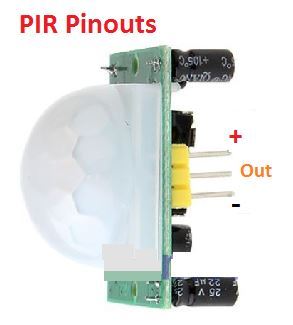

Light Intensity Transition
As requested, the 30% light transition in the absence of a human can be implemented by simply adding a 1K or some other calculated resistor with the negative line of the LED as shown below:
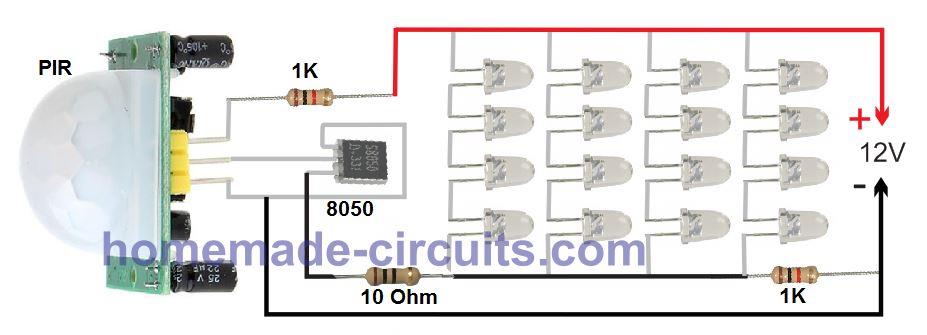
Video Demo
Design# 2
The next two PIR based sensor LED light circuits is similar but has an added feature of detecting the ambient light conditions also. Therefore the circuits will respond based on whether the atmospheric light is sufficiently dark or not and also whether the premise is occupied by a human.
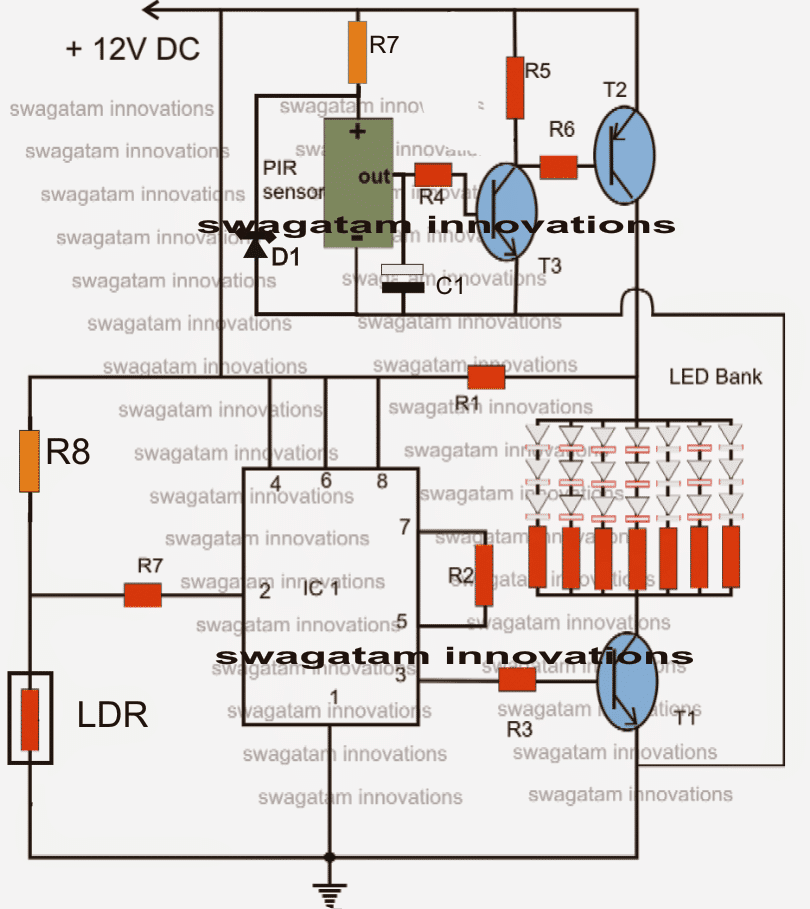
Let's try to understand the PIR based LED lamp circuit functioning from the following points:
The IC 555 is configured as a comparator, the LDR and R8 values are compared for generating an appropriate output.
As long as there's enough light over the LDR, pin#2 of the IC remains high and this keeps the output pin#3 of the IC high as well.
The high output at pin#3 keeps the transistor and the LED switched ON, until the ambient light falls below a predetermined value set by P1.
This means during night or in the absence of light the LEDs too get switched OFF.
The upper section is a proximity sensor circuit. The transistors T2 and T3 are configured as high gain amplifier and is able to sense even minute voltages from the PIR sensor.
In the presence of any human or animal in the specified vicinity, the PIR becomes active and triggers T3, which in turn switches ON T2.
T2 instantly shorts R1, such that the supply voltage reaches the LEDs directly instead of via R1.
This situation brightens up the LED illumination, indicating the presence of a passer by (as stated in the request).
The capacitor C1, ensures the LED brightness stays alive for many seconds, even after the PIR is deactivated.
Parts List
- R1 = 100 Ohms,
- R2,R4 = 100K,
- R3,R5, R6 = 10K,
- R7 (at IC 555 pin2) = 2M2,
- R7 at PIR positive = 10K
- R8 = 2M2,
- C1 = 470uF/25V
- LED resistors = 100 Ohms each,
- T1, T3 = BC547,
- T2 = BC557,
- D1 = 4.7V zener
- LDR = any standard type.
- PIR sensor = any standard type.
- IC1 = 555
Darkness Activated PIR Circuit
The following circuit can be used for automatically detecting human presence, and activating the lights during night time.
